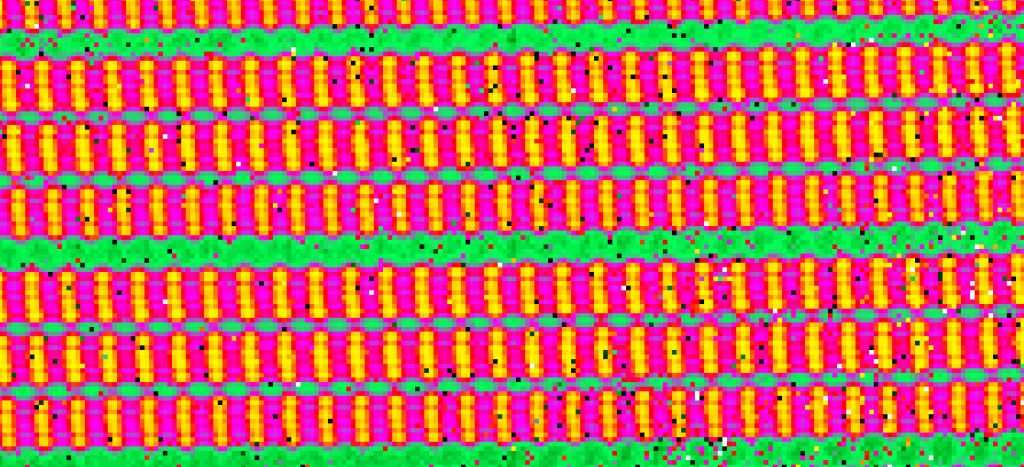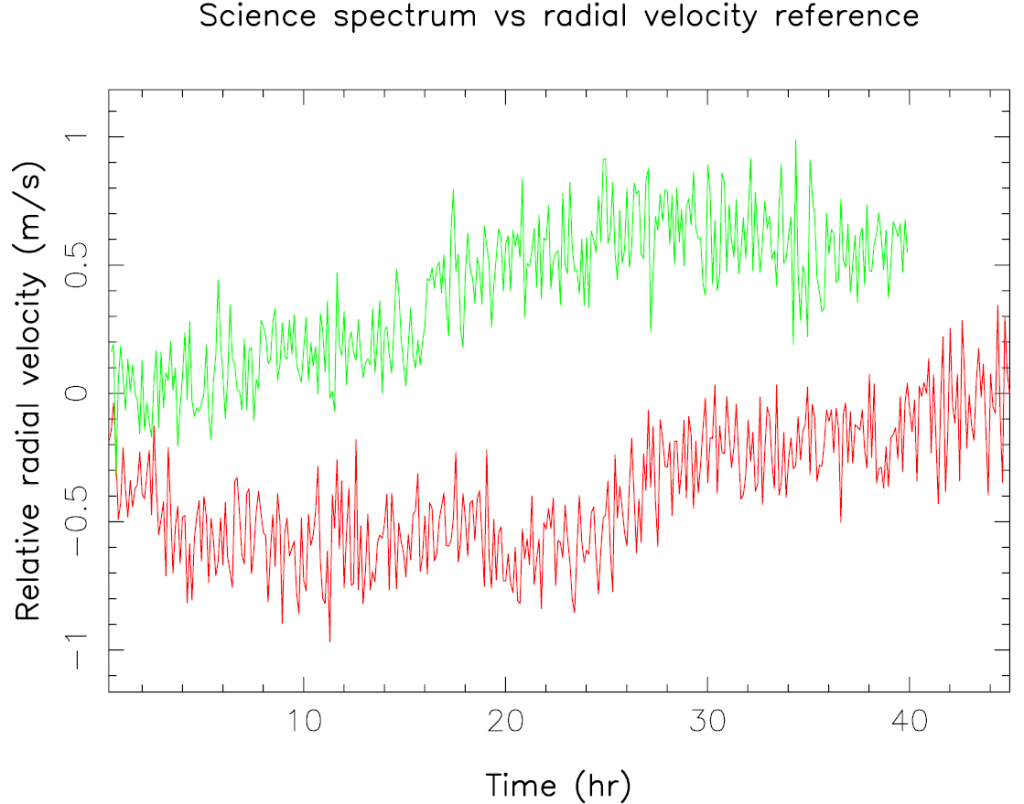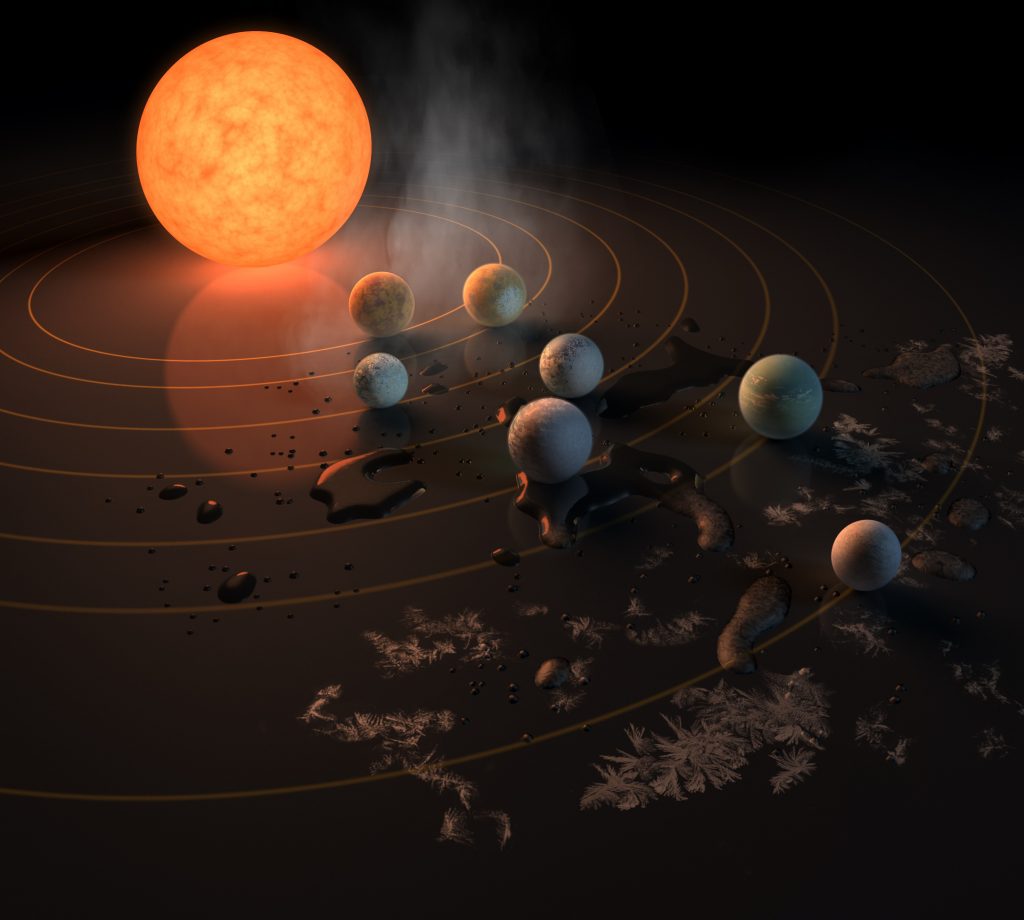2017 July: SPIRou validates key velocimetric requirement
SPIRou demonstrates sub-m/s velocimetric stability
Following the perfect focussing of the cryogenic spectrograph, SPIRou is entering a phase of intense testing to investigate how well it performs in comparison with expectations from the detailed optical and cryomechanical computational analyses of the whole system carried out prior to the Final Design Review that SPIRou passed in June 2014.

In particular, SPIRou aims at becoming one of the most precise velocimeters worldwide, in order to be able to unveil planetary worlds of nearby red dwarves such as the impressive 7-planet system recently discovered around Trappist-1. SPIRou thus needs to demonstrate that it can reach the required velocimetric precision of 1 m/s or better, that will allow the SPIRou science team members to diagnose the presence of Earth-like planets from the periodic changes they communicate to the radial velocities of the host stars around which they orbit.
To perform this test, SPIRou records Fabry Perot spectra featuring more than ten thousand lines throughout the full spectral domain, at a rate of about 5-10 per hour for periods of several tens of hours. By measuring how much the science spectrum drifts with respect to the reference spectrum, we can estimate how precise SPIRou will be for detecting Earth-like planets. Our tests reveal that SPIRou is remarkably stable, with a relative precision of the science spectrum with respect to the reference spectrum of better than 0.25 m/s rms on periods of 24 hr – about twice smaller than the amount originally allocated to this dominant contributor to the SPIRou radial velocity error budget. This is very promising news regarding how efficient SPIRou will be at characterizing nearby habitable exoplanet worlds such as that of Trappist-1.
SPIRou acceptance tests are handled by Andres Carmona and Jean-Francois Donati from IRAP / OMP, with regular participation from the core science team, including Xavier Delfosse from IPAG, Guillaume Hébrard from IAP, and Claire Moutou from CFHT, and with contributions from the data reduction software (DRS) team (Francois Bouchy, Isabelle Boisse and Melissa Hobson from OHP / LAM, and Etienne Artigau from UdeM).




